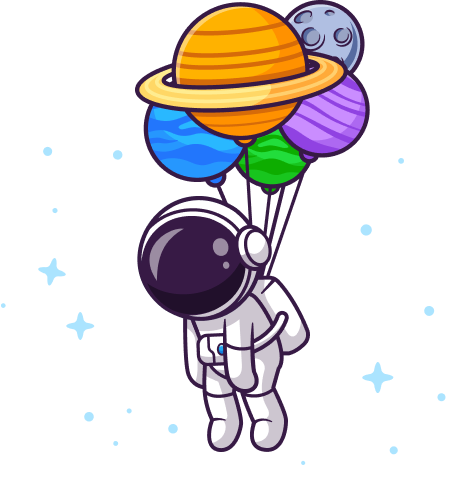JOINing Across Multiple Relationships
Keep on Learning!
If you liked what you've learned so far, dive in! Subscribe to get access to this tutorial plus video, code and script downloads.
With a Subscription, click any sentence in the script to jump to that part of the video!
Login SubscribeWe decided to change the relationship between Question and Tag from a true ManyToMany to a relationship where we have an entity in between that allows us to add more fields to the join table.
In the database... this didn't change much: we have the same join table and foreign keys as before. But in PHP, it did change things. In Question, instead of a $tags property - which returned a collection of Tag objects - we now have a $questionTags property that returns a collection of QuestionTag objects. This change almost certainly broke our frontend.
We're only rendering the tags on the homepage.... so let's open up that template templates/question/homepage.html.twig. Here it is: for tag in question.tags. That's not going to work anymore because there is no tags property. Though, if you want to be clever, you could create a getTags() method that loops over the questionTags property and returns an array of the related Tag objects.
Or... you can fix it here to use questionTag in questionTags. Then say questionTag.tag to reach across that relationship.
| // ... lines 1 - 9 | |
| <div class="container"> | |
| // ... lines 11 - 15 | |
| <div class="row"> | |
| {% for question in questions %} | |
| <div class="col-12 mb-3"> | |
| <div style="box-shadow: 2px 3px 9px 4px rgba(0,0,0,0.04);"> | |
| <div class="q-container p-4"> | |
| <div class="row"> | |
| <div class="col-2 text-center"> | |
| // ... lines 23 - 26 | |
| {% for questionTag in question.questionTags %} | |
| <span class="badge rounded-pill bg-light text-dark">{{ questionTag.tag.name }}</span> | |
| {% endfor %} | |
| </div> | |
| // ... lines 31 - 38 | |
| </div> | |
| </div> | |
| // ... lines 41 - 45 | |
| </div> | |
| </div> | |
| {% endfor %} | |
| </div> | |
| </div> | |
| // ... lines 51 - 53 |
So still fairly straightforward... just a bit more code to go across both relationships.
Let's refresh and see what happens. And... whoa!
Semantical error: near
tag WHERE q.askedAt: ClassQuestionhas no association namedtags.
So... that sounds like a query error... but let's look down the stack trace. Yup! It's coming from QuestionRepository.
Joining Across Two Entities
Go open that up: src/Repository/QuestionRepository.php... here it is. To solve the N+1 problem, we joined directly across the previous q.tags relationship. Now we're going to need two joins to get to the tag table.
No problem: change q.tags to q.questionTags and alias that to question_tag. Then do an inner join from QuestionTag to Tag - ->innerJoin('question_tag.tag') - and alias that to tag.
| // ... lines 1 - 15 | |
| class QuestionRepository extends ServiceEntityRepository | |
| { | |
| // ... lines 18 - 25 | |
| public function findAllAskedOrderedByNewest() | |
| { | |
| return $this->addIsAskedQueryBuilder() | |
| ->orderBy('q.askedAt', 'DESC') | |
| ->leftJoin('q.questionTags', 'question_tag') | |
| ->innerJoin('question_tag.tag', 'tag') | |
| ->addSelect('tag') | |
| ->getQuery() | |
| ->getResult() | |
| ; | |
| } | |
| // ... lines 37 - 59 | |
| } |
Cool! And we're still selecting the tag data... so that looks good to me.
Refresh again and... another error! This one... is even more confusing.
The parent object of entity result with alias
tagwas not found. The parent alias isquestion_tag.
This is trying to say that it doesn't like that we're selecting the tag data... but we're not selecting the question_tag data that's between Question and Tag. Doing that is legal in SQL... but it messes up how Doctrine creates the objects, so it doesn't allow it.
The solution is easy enough: select both. You can actually pass an array to addSelect() to select question_tag and tag.
| // ... lines 1 - 15 | |
| class QuestionRepository extends ServiceEntityRepository | |
| { | |
| // ... lines 18 - 25 | |
| public function findAllAskedOrderedByNewest() | |
| { | |
| return $this->addIsAskedQueryBuilder() | |
| ->orderBy('q.askedAt', 'DESC') | |
| ->leftJoin('q.questionTags', 'question_tag') | |
| ->innerJoin('question_tag.tag', 'tag') | |
| ->addSelect('question_tag', 'tag') | |
| ->getQuery() | |
| ->getResult() | |
| ; | |
| } | |
| // ... lines 37 - 59 | |
| } |
Try it now. And... we're back! Woo! Check out what the query looks like... it's this big first one. So cool: we select from question left join to question_tag, inner join over to tag... and grab all of that data.
Okay team: there's just one last topic I want to cover... and, I admit, it's not strictly related to relations. Let's add pagination to our homepage.

Finally this makes sense. I've been wondering about this process from soup to nuts ever since way back when Ryan gave a very brief description about this in a previous Doctrine tutorial. Thanks!